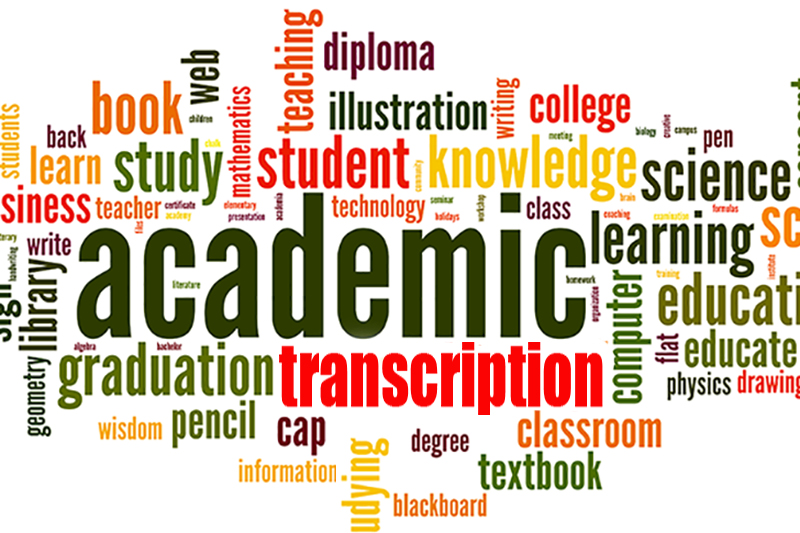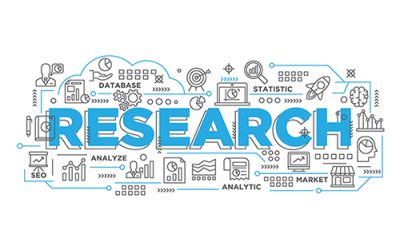From coming up with research questions to collecting data, writing papers, and getting them published, the challenges that academic researchers face can sometimes feel overwhelming.
Additionally, there’ s the constant struggle to keep up with compliance rules, institutional demands, and ever-evolving technology. Academic transcription services can ease the situation and help you manage and analyze those massive datasets from surveys and interviews, saving you time and headache.
Your data needs to be spot-on and easily accessible for efficient analysis. Whether you handle the audio-to-text conversion task using speech recognition software or use professional transcription services, following best practices is crucial to ensure quality information. Before we explore these best practices, let’ s look into the significance of accurate research transcription.
Importance of Academic Transcription in the Research Process
Academic transcription plays a significant role in the research process. Recordings of lectures, webinars, lessons, and speeches have to be transcribed correctly for the accurate representation and preservation of research data. Here are six benefits of research transcription:
- Accurate representation of research data: By converting their audio or video recordings into written transcripts, researchers can ensure the accurate representation and preservation of research data. They can refer back to the content, avoiding potential errors or omissions that can occur from relying solely on memory.
- Proper data analysis: Transcripts promote efficient data analysis. Researchers can easily search and navigate through written transcripts to identify key themes, extract relevant information, and draw meaningful conclusions. Transcribing interviews or focus groups, enables thorough analysis and interpretation of the collected information.
- Enhanced accessibility: Academic transcription enhances accessibility to the material for a wider audience. With written transcripts, researchers can share their research findings with a wider audience, including individuals with hearing impairments or language barriers. This promotes inclusivity and ensures that valuable knowledge is available to a diverse range of individuals.
- Collaboration and verification: Transcripts enable effective collaboration among researchers. A study commissioned by Ex Libris to assess the experience of researchers found that while collaboration and networking is essential for research, it is a major challenge faced by researchers. Advances in technology have changed the demands for transparency in sharing research. Transcription allows multiple individuals to review and analyze the same transcript, ensuring accuracy and fostering a collaborative research environment. Moreover, by providing a detailed record of the data collection process, the transcripts provide valuable evidence for the verification of research findings.
- Credibility: With transcripts, researchers can ensure accurate citation and referencing. They can strengthen the credibility of their research work by directly quoting from transcripts, citing specific sections or quotes with precision. Transcripts also allow others to easily find and verify the referenced information.
- Saves time and resources : Researchers can save time and resources with written transcripts. They can quickly scan the material, rather than spending extensive hours listening to recordings repeatedly. Transcription supports more efficient analysis and writing processes.
By making data more accessible, manageable, and reliable, academic transcription enhances the quality and impact of research and makes work less stressful for researchers. However, doing research transcription the right way, is crucial to make the most out of it.
Best Practices to Maximize the Benefits of Research Transcription
Here are nine best practices to ensure accurate and reliable academic research transcription:
- Quality recording: When conducting surveys and interviews, use a quality recording device or software to capture clear audio with minimal background noise. To ensure optimal sound quality, test the recording equipment before the actual session.
- Transcription format: Once you have transcribed and proofread the file, the next crucial step is formatting. Follow a consistent and standardized transcription format. Depending on the level of detail required, determine if you need clean verbatim (an edited version) or full verbatim (version with spoken words exactly as stated). Choose the appropriate format based on your research needs. Make sure the documents adhere to academic standards and have proper headings, paragraphs, and page numbering. Keep in mind that incorrectly formatted citations can result in plagiarism, which can severely damage your academic reputation. Best practice to save time and ensure proper formatting is to utilize tools such as Google Docs or Microsoft Word. Both programs have built-in features that automatically generate bibliographies based on the sources used in your document. Whenever you add a new citation, these tools will add the source in the correct format, be it APA, MLA, Chicago, Harvard, or others. This eliminates the hassle of manually formatting citations and ensures compliance with the required citation style.
- Familiarize yourself with the topic: Carefully study the topic at hand. When you encounter unfamiliar terms in your recording, identify the industry associated with them. This will help you anticipate similar terminology and comprehend the speaker’s jargon more effectively. Determine the speaker’s geographic origin to better identify words affected by accent or local colloquialisms. Visiting the organization’s website can give you access to information that can help identify difficult-to-transcribe abbreviations, organizational names, or project titles. Utilize Google to search for phonetic spellings of words and their meanings.
- Accuracy and attention to detail: Accuracy is crucial. Ensure that the transcripts reflect the actual content and context of the audio. Pay attention to details such as punctuation, grammar, speaker identification, and timestamps.
- Speaker identification: Clearly identify each speaker in the transcription to differentiate between multiple participants. Initials, names, or labels (e.g., Interviewer, Participant 1, Participant 2) can be used to indicate who is speaking. Assigning speaker labels is important to for many reasons:
- It helps understand the dynamics of interactions, attribute statements correctly, and extract valuable insights from the data.
- Attributing specific statements or dialogue to the appropriate individuals makes transcripts more comprehensible.
- It enhances the clarity, analysis, referencing, collaboration, and accuracy of recorded conversations or interviews
- It enables accurate quoting and referencing in academic or research work. Researchers can directly attribute statements or viewpoints to specific speakers, supporting the credibility and integrity of their findings
- In speech analysis and linguistic studies, speaker identification allows researchers to study the speech patterns, language use, and communication styles of different individuals.
- Timestamps: Include timestamps at regular intervals or whenever there is a significant change in topic or speaker. By indicating the time at which a particular segment occurs, timestamps facilitate easy navigation and retrieval of relevant information. They help in locating specific sections of the audio during analysis. Timestamps in academic transcription are important for several reasons:
- Reference and navigation : By providing reference points in the transcript, timestamps allow researchers or readers to quickly locate specific sections of the audio/video recording.
- Accuracy and verification : Timestamps allow researchers to cross-reference the transcript with the original recording, ensuring that the transcribed content is a realistic representation of the actual conversation. Timestamps also provide a means to verify and validate the accuracy of quotes or specific statements of each speaker.
- Analysis and data interpretation : Timestamps help in the accurate analysis and interpretation of data. Researchers can synchronize the transcript with other data sources, such as survey responses or observational notes, to gain a comprehensive understanding of the context and dynamics of the recorded conversation.
- Collaboration and communication : Timestamps facilitate precise communication among researchers working on the same transcript. By referring to timestamps, researchers can discuss particular points, facilitating efficient collaboration and ensuring everyone is on the same page.
- Quality assurance : Timestamps serve as a quality assurance measure in transcription services. They enable reviewers or proofreaders to check the accuracy of the transcribed content by listening to the corresponding sections of the audio/video recording. Timestamps help identify any errors, omissions, or inconsistencies, improving the overall quality of the transcription.
- Legal and ethical considerations: Timestamps provide an accurate record of the timing of events or statements, which may be essential in legal proceedings, research integrity, or preserving the authenticity of evidence.
- Proofreading and editing: After completion, the transcripts must be proofread and edited to correct any errors, improve readability, and ensure consistency. Reliable academic transcription service providers will review transcripts against the audio to verify accuracy.
- Backup and storage: Researchers should keep multiple copies of their transcriptions as backup. Using encrypted storage or password-protected files can prevent data loss or unauthorized access.
- Transcription software: Using transcription software can help save time and improve accuracy. Popular transcription software includes Express Scribe, Transcriber for WhatsApp, and oTranscribe.
If you have a large volume of audio files, consider using academic transcription services. Leading companies have professional transcriptionists who can deliver quality transcripts in time to meet your research requirements. They will also handle the transcription with care, maintain confidentiality, and comply with ethical guidelines. Partnering with an expert can ensure accurate and timely transcripts for efficient data analysis and collaboration.
Contact us to discuss your transcription needs and experience the convenience and quality of our academic transcription services.




